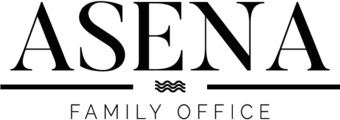Last week the US yield curve – specifically the segment between ten and two-year Treasury bonds – briefly inverted, triggering a wave of panic in equity markets. An inverted yield curve is commonly seen as a harbinger of recession, but the slope in fact does not provide much information about future economic growth. The commotion in equity markets was made worse by a slew of uninspiring economic data, not helped by the hazy outlook on the next phase of the trade spat, political unrest in Hong Kong, and thin summertime trading volumes.
Donald Trump postponed the 10% duty on extra Chinese goods to 15 December, including mobile phones, laptops and gaming consoles. The notional amount of such imports is estimated at USD 160bn. Apparently the decision was made so that festive-season sales would not take a hit. Hence this was more a sign of Donald Trump’s vulnerability on the internal political front than a goodwill gesture towards China. After all, why should the Chinese make tough decisions to diffuse the trade war when they can wait for Donald Trump and his advisors to react to electoral pressure each time the US stock market nosedives?
China’s manufacturing base continues to slow. Growth in industrial production, at 4.8%, was below forecasts. The same applied to retail sales, which rose by 7.6%. Following the disappointing figures on bank lending, this news strengthens expectations for further stimulus measures. Meanwhile in the US, consumers are showing resilience, with retail sales rising by 0.7% in July – a vital consideration given that two-thirds of economic growth stems from consumer spending. Helping here is the low rate of unemployment.
The market now expects 60 basis points of Fed rate cuts this year followed by 50 basis points in 2020. The downtrend in long-term yields is probably more than can be justified by the slowing economic output. More likely, this is a move aimed at pocketing capital gains. For Europe, it is important to note that in Germany, the yield curve is not a reliable indicator of recession and in Italy, the curve is far from inverted. Still, both countries are considered to be in ‘technical recessions’. Germany’s economy contracted by 0.1% in terms of GDP in the second quarter, dragged down by lower exports of machine tools and motor vehicles. Both are traditionally supportive to the economy but have been wobbling for the past year. In contrast, domestic demand remains brisk.
If you have any questions please contact the office on (03) 9670 6070.
